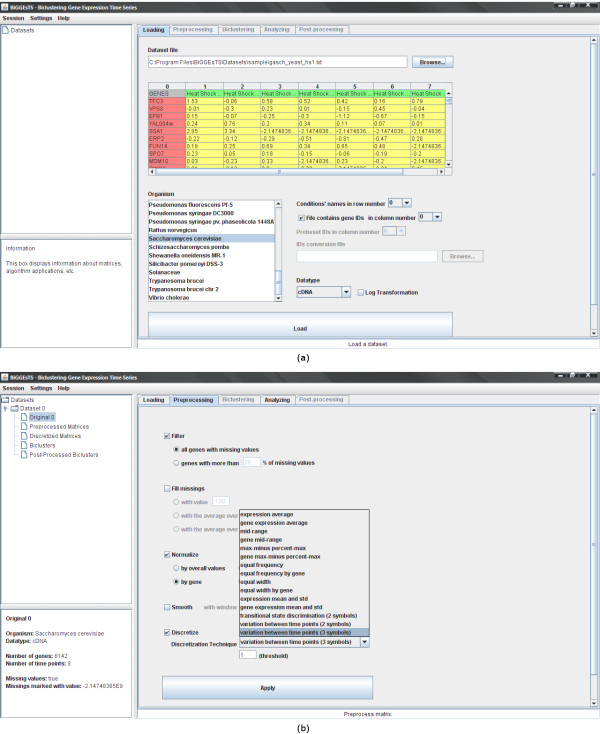Figure 1.
Input and preprocessing modules. This figure shows: (a) The main window of BiGGEsTS and its input module for loading time series gene expression data. The graphical user interface (GUI) includes a set of tabs, for functionality selection, and three panels: a top-left panel displaying the dataset tree, where expression matrices and biclusters are organized; a bottom-left panel displaying a box with information about the selected node in the dataset tree; and a right panel, whose content depends on both the selected node and functionality tab. The navigation on the dataset tree, as well as on the tabs, is intuitive and straightforward. A session can be saved anytime to keep record of data and results. Saved sessions can be loaded later enabling researchers to recover previous stages of their analysis. The input of expression time series is performed using a standard text file. The file contains the elements of the gene expression matrix delimited by a specific character (usually tab), together with additional information about the data, including the organism, and the row and column specifying the names of the time points and the genes, respectively. When the names of the genes used in the biological experiments and their corresponding symbol approved by the Human Genome Organization (HUGO) Gene Nomenclature Committee (HGNC) differ, the researcher may want to provide an additional file. This input file is optional, since it is only required for retrieving the gene annotations and assessing the biological relevance of the biclusters. (b) The preprocessing module for filtering genes, filling missing values, normalizing, smoothing and/or discretizing gene expression data. Available preprocessing techniques are described in the Quickstart Guide [see Additional file 2].

